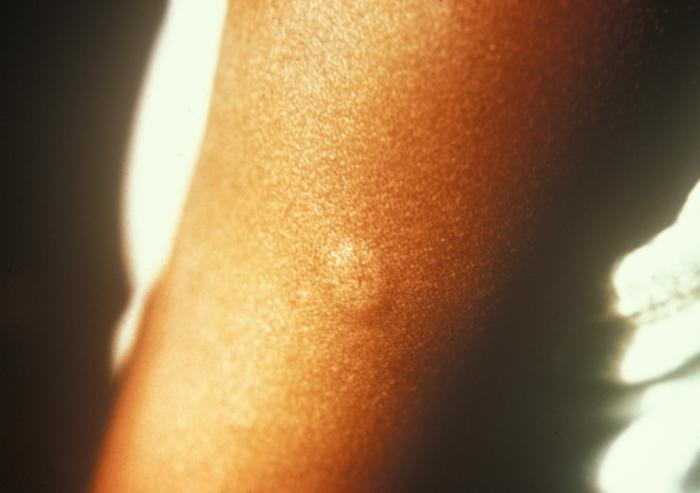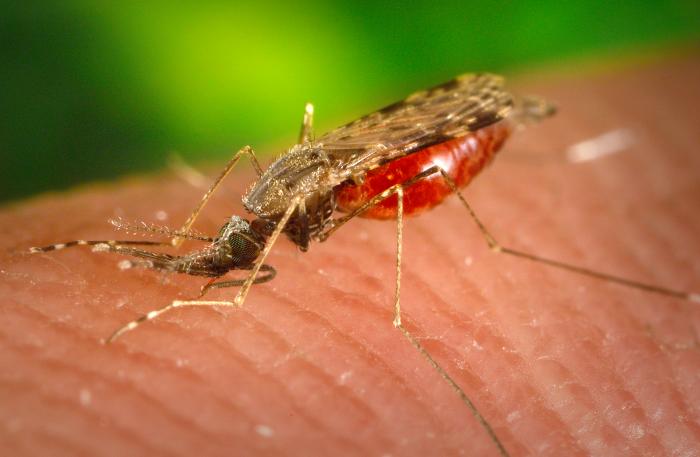Mosquito Bites!
Treatment So you've been bitten....Now what?
So you've been bitten....Now what?
Wash with soap and water
Avoid scratching
Apply:
Calamine lotion
Cortisone creams
Other "itch relief" ideas
How to prevent being
bitten again!
Prevention of Bites-
-
-Wear clothing that covers body
-
-
-Apply Mosquito repellent that contains DEET (NN-diethyl-metatoluamide)
-
This chemical impairs a mosquito's chemical sensors making YOU more difficult to locate!
-
-
-Control Mosquito population by eliminating breeding sites by removing sources of standing water-- this includes taking the necessary step to make your fish pond (if you have one) a less attractive breeding ground
-
-Permethrin can be used and is an effective pesticide. I would try to only use in extreme situations because it is a neurotoxin! Avoid all contact with skin!
-
-
-Use Citronella products - HOWEVER- only effective in HIGH concentrations
-
-
-Attract animals that eat mosquitoes, such as bats, to the area surrounding your home. One bat catch up to 600 mosquitoes in an HOUR! Mosquito eating fish are another good option if you have a pond, one fish can eat up to 500 mosquito larvae per day!
There is much to be learned about Anopheles earlei at this point! Hopefully the information I have learned and included for you on this webpage has excited YOU to learn more about this species and to fill in some of the missing gaps!
REFERENCES:
Alameda County Mosquito Abatement District. <URL: http://www.mosquitoes.org/index.htm>. Accessed 9 April 2008.
Clements, A.N. 1992.
The Biology of Mosquitoes. Chapman and Hall,
Chlamydomonas reinhardtii <URL:
http://bioweb.uwlax.edu/bio203/s2007/awowale_john/>.
Accessed 9 April 2008
Considerations for Community Mosquito
Control in
D’Antonio, M. and A. Spielman. 2001.
Mosquito-A Natural History of Our Most Persistent and
Deadly Foe. Hyperion,
Entomology Collection-Anopheles earlei. <URL:http://www.entomology.ualberta.ca/searching_species_details.php?b=Diptera&c=7&s=6130#>. Accessed 27 February 2008.
Harbach, R. E. and K.L. Knight. 1980.
Taxonomists’ Glossary of Mosquito Anatomy. Plexus Publishing,
Hine's Emerald Dragonfly. <URL:
http://bioweb.uwlax.edu/bio203/s2007/cocchiol_matt/>.
Accessed 9 April 2008.
How Stuff Works- How Mosquitoes Work 1998. <URL: http://science.howstuffworks.com/mosquito.htm>. Accessed 1 March 2008.
Malaria Journal 1999-2008. <URL:http://www.malariajournal.com/>. Accessed 22 April 2008.
Matheson, R. 1944.
Handbook of the Mosquitoes of
Over 40 Mosquito Bite Itch Relief Tips. <URL: http://tipnut.com/over-40-mosquito-bite-itch-relief-tips/ >. Accessed 9 April 2008.
Plasmodium falciparum. <URL: http://bioweb.uwlax.edu/bio203/s2007/augustin_laur/>. Accessed 9 April 2008.
Pratt, H.D. 1952. Notes on Anopheles earlei and other American Species of the Anopheles maculipennis Complex. American Journal of Tropical Medicine and Hygiene 3:484-493
Rozeboom, L.E. 1952.
Anopheles earlei Vargas, 1943 in
Science News for Kids- The Buzz about Mosquitoes 2004. <URL:http://www.sciencenewsforkids.org/articles/20040811/Feature1.asp>. Accessed 1 March 2008.
Walter Reed Biosystematics Unit- Adult Anopheles earlei 2008. <URL:http://www.wrbu.org/speciespages_ano/ano_a-hab/anear_hab.html>. Accessed 27 February 2008.
 About the Author:
About the Author:
Hi! My name is Laura Otto and I am currently a junior at University of Wisconsin- La Crosse. My major is Biology with a concentration in biomedical science. I choose to study Anopheles earlei because living in Wisconsin, I have a lot of personal experience with these pesky insects. I love spending time outside, camping, biking and just enjoying not having to study! I plan to continue my education next year by attending graduate school to become a Physician Assistant. With any questions or corrections please email me at otto.lau2@students.uwlax.edu. Thanks for taking the time to check out my site!
This site was last updated April 21, 2008. University of Wisconsin-La Crosse. Biology 203.
To return to multipleorganisms.net click here!
